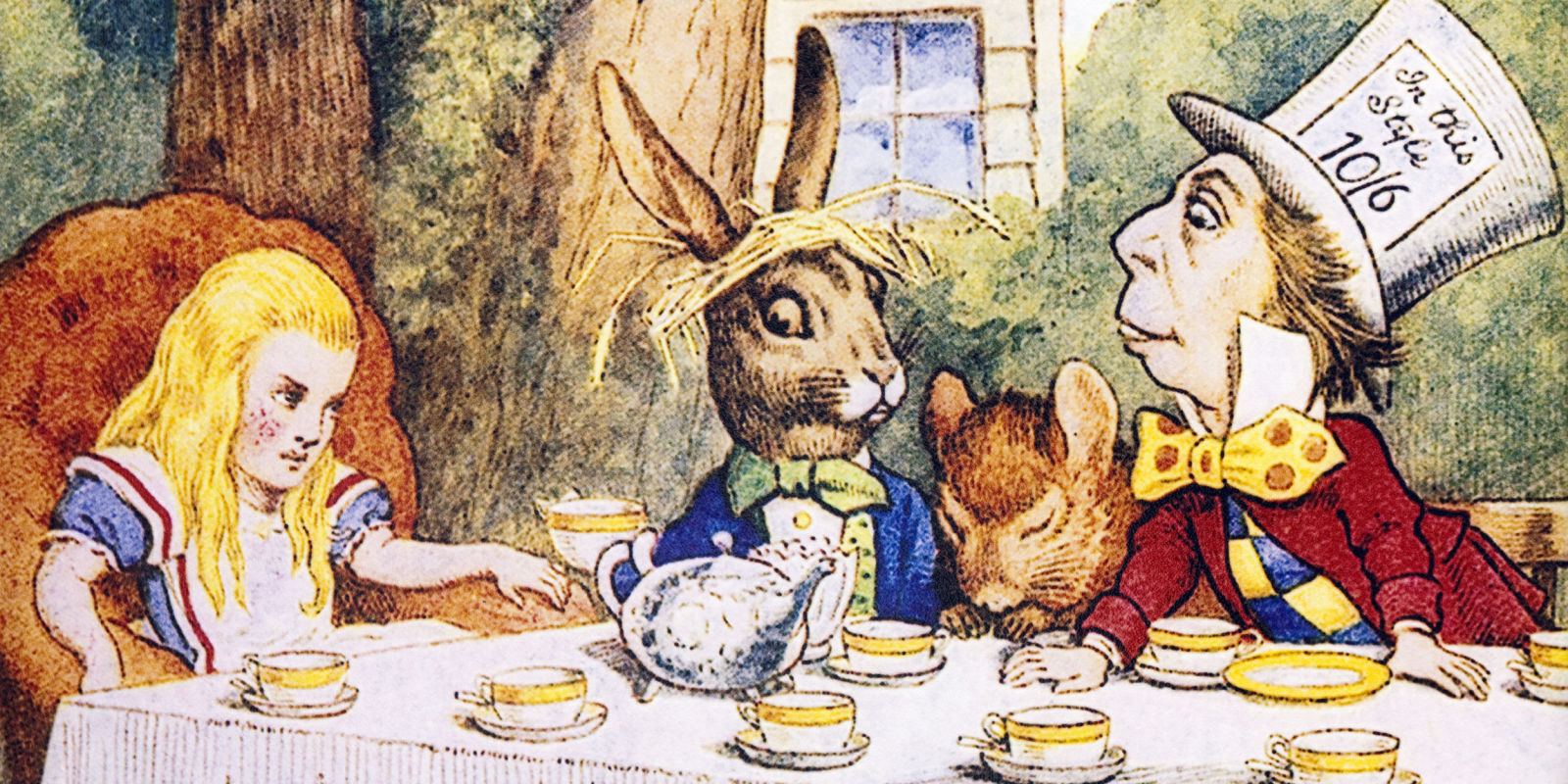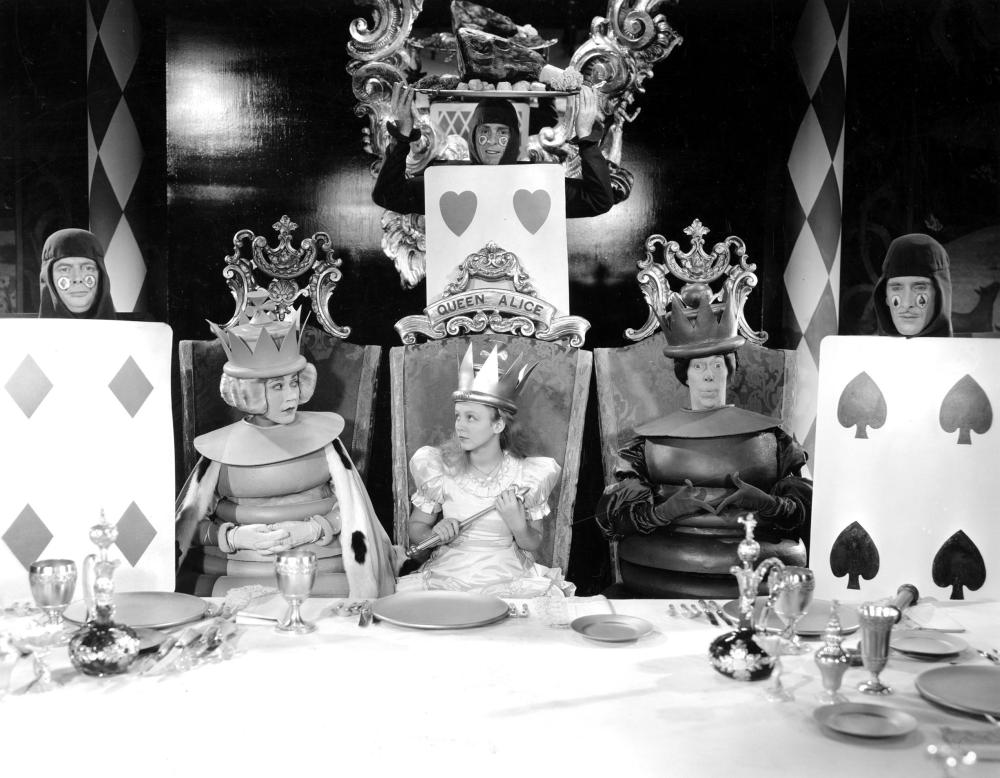What Alice Found There (Part 4) | The Fourth Dimension: “Freeing the Intellect from the Shackles of the Actual”

WILLIAM HAMILTON WAS MAD AS A HATTER. Of course, so was a certain Theophilus Carter. The later was a furniture dealer residing near the Oxford of Carroll’s time. The fact that he was actually known by locals as the Mad Hatter, partly due to an obsession with his top hat and because eccentricities became his order of business, is not a coincidence. Carter’s invention of an “alarm clock bed,” for example, which promised to wake the sleeper by tossing him upon the cold, hard floor, was exhibited at the Crystal Palace in 1851. No surprise though, it didn’t catch on. Critics have long explained Theophilus Carter as the reason why Alice’s Hatter is so concerned with time and arousing a sleepy dormouse, not to forget his gratuitous mentions of furniture. Then again, Lewis Carroll didn’t have a bone to pick with Theophilus Carter.

All things considered, it would most certainly be a mistake to overlook the Irish physicist, astronomer, and mathematician William Hamilton. The fourth dimension had become quite the craze in the 19th-century, and Hamilton played his part. Hamilton was looking for ways of extending complex numbers to higher spatial dimensions. The third-dimension failed him. But in working with four dimensions he created ‘quaternions.’ As early as 1843, quaternions had been hailed as an important milestone in abstract algebra, since rotations could be calculated algebraically, and would later be employed within the Kepler Problem and the study of celestial mechanics. Makiko Minow-Pinkney writes, Hinton “believed that with enlarged imaginative powers gained by the practice of visualizing the four-dimensional cubes which he called ‘tesseracts,’ individuals would gain access to true reality (The Question of the Fourth Dimension).”
Hamilton, it seems, was driven by the notion that algebra was the science of time. Specifically, Melanie Bayley writes, he believed “algebra allowed the investigation of ‘pure time,’ a rather esoteric concept he had derived from Immanuel Kant that was meant to be a kind of Platonic ideal of time, distinct from the real time we humans experience.” As a result, he “discovered a four-dimensional manifold of numbers, the ‘quaternions’—usually called hyper complex numbers today,” writes David Booth in the introduction to Rudolf Steiner’s The Fourth Dimension: Sacred Geometry, Alchemy, and Mathematics (1905). “Hamilton did explore the fourth dimension, but still refused to actually accept the notion of a four dimensional space. He carried out his research at a time in which—according to our hypothetically accepted view of Cultural Revolution—man’s consciousness had descended to the greatest degree into matter. Hamilton used three dimensions (the vectors), along with a fourth (the tensor), that were kept separate so that they did not combine into a single four dimensional manifold.”

The fourth dimension certainly wasn’t loved by all. In his critique of Charles Howard Hinton’s book The Fourth Dimension, Bertrand Russell wrote that such impropriety would “stimulate the imagination, and free the intellect from the shackles of the actual,” and that by claiming “our three-dimension world is superficial,” Hinton came across as a “conscientious bigamist.” Carroll also took an offensive position. For the author of Wonderland, “the fourth-dimension,” says Ana Teixeira Pinto, a lecturer at Berlin University of the Arts, “was a case of the hypostatization of language: abstraction taken literally, and set phrases, metaphors, and figures of speech given concrete reality.”
At any rate, Alice finds herself at a tea party, or perhaps it should read “t-party,” with three curious inhabitants of Wonderland: the Hatter, the March Hare, and the Dormouse. Notice that the character Time is absent from the t-party. Actually, the Mad Hatter has had a falling out with Time, and is stuck at 6 o’clock accordingly—and perhaps even eternally. Says the Hatter to Alice: “If you knew Time as well as I do, you wouldn’t talk about wasting it. It’s HIM.”

Writes Melanie Bayley: “The members of the Hatter’s tea party represent three terms of a quaternion, in which the all-important fourth term, time, is missing. Without Time, we are told, the characters are stuck at the tea table, constantly moving round to find clean cups and saucers.” The movement around the table can be seen as Hamilton’s unsuccessful attempts at calculating motion, which was limited to rotations on a plane until he added time to the equation. Bayley continues, “Alice’s ensuing attempt to solve the riddle pokes fun at another aspect of quaternions: their multiplication is non-commutative, meaning that x × y is not the same as y × x. Alice’s answers are equally non-commutative.”
There is an exchange between the Hatter, March Hare, and Alice that goes like this.
“Then you should say what you mean,” the March Hare went on.
“I do,” Alice hastily replied; “at least–at least I mean what I say–that’s the same thing, you know.”
“Not the same thing a bit!” says the Hatter. “Why, you might just as well say that ‘I see what I eat’ is the same thing as ‘I eat what I see’!”
Hamilton’s stimulation of the imagination, specifically his freeing “the intellect from the shackles of the actual,” as Russell would say, found its fullest realization in the establishment of Globe Earth—or rather, it’s only proof of existence. And it’s a mathematical one. “The development of abstract mathematical formalisms, notably that of tensor calculus,” writes the astrophysicist John Barrow. “A deep physical insight orchestrated the mathematics of general relativity, but in the years that followed the balance tipped the other way. Einstein’s search for a unified theory was characterized by a fascination with the abstract fomalisms themselves.”

Gerrard Hickson put the general theory of relativity, backed in part by the fourth dimension, to rest in his book, Kings Dethroned. He wrote: “While claiming ‘time’ as a fourth dimension, Einstein explains that ‘by dimension we must understand merely one of four independent quantities which locate an event in space.’ . . . This is to imply that the other three dimensions which are in common use are independent quantities, which is not the case; for length, breadth and thickness are essentially found in combination; they co-exist in each and every physical thing, so that they are related—hence they are not independent quantities. . . . On the contrary, time IS an independent quantity. It is independent of any one, or all, the three proportions of material things, it is not in any way related; and therefore cannot be used as a fourth dimension.”
“When the scene ends,” Bayley adds, “the Hatter and the Hare are trying to put the Dormouse into the teapot….If they could only lose him, they could exist independently, as a complex number with two terms. Still mad, according to Dodgson, but free from an endless rotation around the table.” Quite unlike pure time, for a conservative mathematician like Lewis Carroll, the non-Euclidean world of Wonderland was pure madness. Non-commutative algebras contradicted the basic laws of arithmetic, and as we’ve come to see, opened up strange new worlds, where the imagination and abstraction roams free. But as always, Alice said it best.
“Let me think. Was I the same when I got up this morning? …But if I’m not the same, the next question is, who in the world am I? Ah, that’s the great puzzle!”
